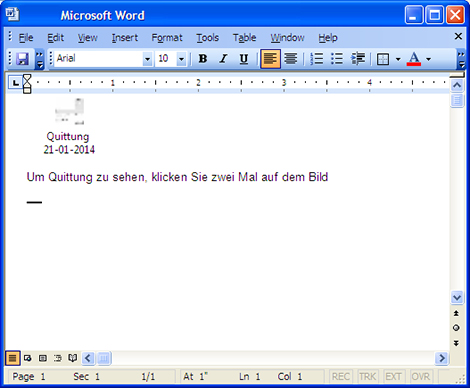TSPY_ZBOT.KVV
Win32/Spy.Zbot.AAO (Eset), Trojan-PWS.Win32.Fareit/Backdoor.Word.DarkKomet (Ikarus), Backdoor.Win32.DarkKomet.byft (Kaspersky), Mal/Necurs-I (Sophos)
Windows 2000, Windows Server 2003, Windows XP (32-bit, 64-bit), Windows Vista (32-bit, 64-bit), Windows 7 (32-bit, 64-bit)


Threat Type: Spyware
Destructiveness: No
Encrypted: Yes
In the wild: Yes
OVERVIEW
This spyware arrives as an attachment to email messages spammed by other malware/grayware or malicious users. It arrives on a system as a file dropped by other malware or as a file downloaded unknowingly by users when visiting malicious sites. It may be dropped by other malware.
It is injected into all running processes to remain memory resident.
It modifies the Internet Explorer Zone Settings.
However, as of this writing, the said sites are inaccessible. It deletes the initially executed copy of itself.
TECHNICAL DETAILS
Arrival Details
This spyware arrives as an attachment to email messages spammed by other malware/grayware or malicious users.
It arrives on a system as a file dropped by other malware or as a file downloaded unknowingly by users when visiting malicious sites.
It may be dropped by the following malware:
- an RTF file also detected as TSPY_ZBOT.KVV
Installation
This spyware drops the following copies of itself into the affected system and executes them:
- %Application Data%\Quittung 2014-21-01.exe - dropped by the RTF file detected as TSPY_ZBOT.KVV
- %Application Data%\{random1}\{random}.exe
(Note: %Application Data% is the current user's Application Data folder, which is usually C:\Documents and Settings\{user name}\Application Data on Windows 2000, XP, and Server 2003, or C:\Users\{user name}\AppData\Roaming on Windows Vista and 7.)
It drops the following files:
- %Application Data%\{random2}\{random}.{random}
- %Application Data%\Microsoft\Address Book\{OS version}.wab
- %Application Data%\Microsoft\Address Book\{user name}.wab~
(Note: %Application Data% is the current user's Application Data folder, which is usually C:\Documents and Settings\{user name}\Application Data on Windows 2000, XP, and Server 2003, or C:\Users\{user name}\AppData\Roaming on Windows Vista and 7.)
It creates the following folders:
- %Application Data%\{random1}
- %Application Data%\{random2}
- %Application Data%\Microsoft\Address Book
(Note: %Application Data% is the current user's Application Data folder, which is usually C:\Documents and Settings\{user name}\Application Data on Windows 2000, XP, and Server 2003, or C:\Users\{user name}\AppData\Roaming on Windows Vista and 7.)
It is injected into all running processes to remain memory resident.
Autostart Technique
This spyware adds the following registry entries to enable its automatic execution at every system startup:
HKEY_CURRENT_USER\Software\Microsoft\
Windows\CurrentVersion\Run
{random} = "%Application Data%\{random1}\{random}.exe"
Other System Modifications
This spyware adds the following registry keys:
HKEY_CURRENT_USER\Software\Microsoft\
{random}
HKEY_CURRENT_USER\Software\Microsoft\
WAB
It creates the following registry entry(ies) to bypass Windows Firewall:
HKEY_LOCAL_MACHINE\SYSTEM\CurrentControlSet\
Services\SharedAccess\Parameters\
FirewallPolicy\StandardProfile\AuthorizedApplications\
List
%Windows%\explorer.exe = "%Windows%\explorer.exe:*:Enabled:Windows Explorer"
HKEY_LOCAL_MACHINE\SYSTEM\CurrentControlSet\
Services\SharedAccess\Parameters\
FirewallPolicy\StandardProfile\GloballyOpenPorts\
List
{port}:UDP = "{port}:UDP:Enabled:UDP {port}"
HKEY_LOCAL_MACHINE\SYSTEM\CurrentControlSet\
Services\SharedAccess\Parameters\
FirewallPolicy\StandardProfile\GloballyOpenPorts\
List
{port}:TCP = "{port}:TCP:Enabled:TCP {port}"
Web Browser Home Page and Search Page Modification
This spyware modifies the Internet Explorer Zone Settings.
Information Theft
This spyware accesses the following site to download its configuration file:
- http://{BLOCKED}ski.prfact.ch/sadcxvbv/vdfbffddf.php|file=config2.bin
Stolen Information
This spyware sends the gathered information via HTTP POST to the following URL:
- http://{BLOCKED}ec948fa2bc.com/53085816/0d5e28f7.php
Other Details
However, as of this writing, the said sites are inaccessible.
It deletes the initially executed copy of itself
NOTES:
This malware is an embedded .EXE file to a .RTF file that is disguised as an image:

The users are tricked into double-clicking the fake image above and as a result, the copy of TSPY_ZBOT.KVV(.EXE file) is dropped on the system.
The configuration file may contain URLs where it downloads an updated copy of itself and sends its gathered information. It may also contain URLs of its target online banking and finance-related sites from where it steals information.
It may also gather the following information from the affected system:
- Data on Cookie files (URLs)
- Email-related information such as account names, email addresses, passwords, server data, and server port
- Email information stored in the user’s Windows Address Book (WAB) file
- FTP credentials
- Online banking credentials
- Flashplayer data
- Personal digital cerificates
SOLUTION
Step 1
Before doing any scans, Windows XP, Windows Vista, and Windows 7 users must disable System Restore to allow full scanning of their computers.
Step 2
Restart in Safe Mode
Step 3
Delete this registry key
Important: Editing the Windows Registry incorrectly can lead to irreversible system malfunction. Please do this step only if you know how or you can ask assistance from your system administrator. Else, check this Microsoft article first before modifying your computer's registry.
- In HKEY_CURRENT_USER\Software\Microsoft
- WAB
- WAB
Step 4
The following created registry key(s) cannot be identified by the user since there are no reference values in the created key. The only way it can be identified is by comparing the present keys with a backup of the system registry. Note that the said key(s) do not have to be deleted since it won't be harmful to the system:
HKEY_CURRENT_USER\Software\Microsoft\{random}Step 5
Delete this registry value
Important: Editing the Windows Registry incorrectly can lead to irreversible system malfunction. Please do this step only if you know how or you can ask assistance from your system administrator. Else, check this Microsoft article first before modifying your computer's registry.
- In HKEY_CURRENT_USER\Software\Microsoft\Windows\CurrentVersion\Run
- {random} = "%Application Data%\{random1}\{random}.exe"
- {random} = "%Application Data%\{random1}\{random}.exe"
- In HKEY_LOCAL_MACHINE\SYSTEM\CurrentControlSet\Services\SharedAccess\Parameters\FirewallPolicy\StandardProfile\AuthorizedApplications\List
- %Windows%\explorer.exe = "%Windows%\explorer.exe:*:Enabled:Windows Explorer"
- %Windows%\explorer.exe = "%Windows%\explorer.exe:*:Enabled:Windows Explorer"
- In HKEY_LOCAL_MACHINE\SYSTEM\CurrentControlSet\Services\SharedAccess\Parameters\FirewallPolicy\StandardProfile\GloballyOpenPorts\List
- {port}:UDP = "{port}:UDP:Enabled:UDP {port}"
- {port}:UDP = "{port}:UDP:Enabled:UDP {port}"
- In HKEY_LOCAL_MACHINE\SYSTEM\CurrentControlSet\Services\SharedAccess\Parameters\FirewallPolicy\StandardProfile\GloballyOpenPorts\List
- {port}:TCP = "{port}:TCP:Enabled:TCP {port}"
- {port}:TCP = "{port}:TCP:Enabled:TCP {port}"
Step 6
Reset Internet security settings
Step 7
Search and delete these folders
- %Application Data%\{random1}
- %Application Data%\{random2}
- %Application Data%\Microsoft\Address Book
Step 8
Search and delete this file
- %Application Data%\Microsoft\Address Book\{OS version}.wab
- %Application Data%\Microsoft\Address Book\{OS version}.wab~
Step 9
Restart in normal mode and scan your computer with your Trend Micro product for files detected as TSPY_ZBOT.KVV. If the detected files have already been cleaned, deleted, or quarantined by your Trend Micro product, no further step is required. You may opt to simply delete the quarantined files. Please check this Knowledge Base page for more information.
Did this description help? Tell us how we did.


